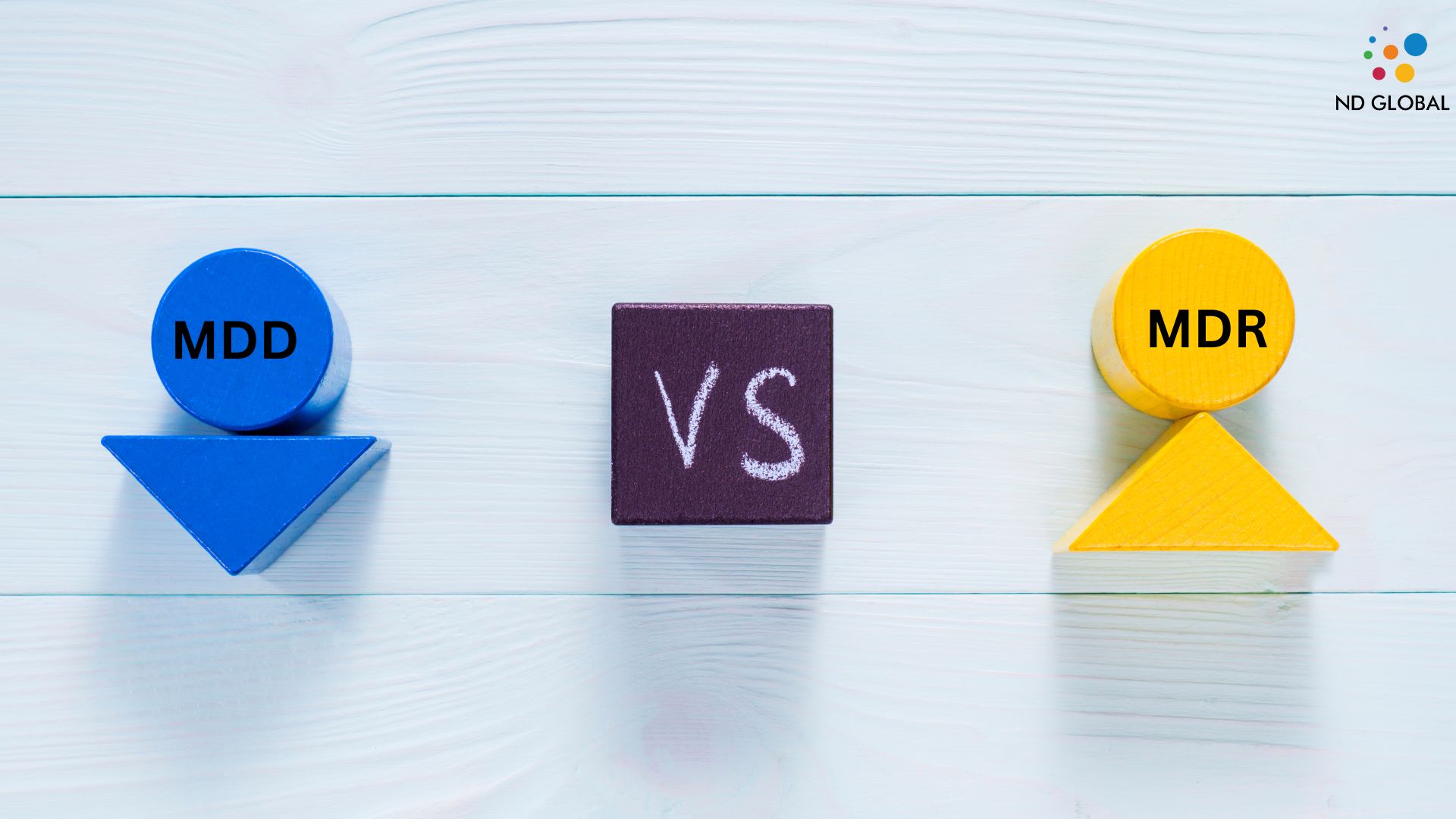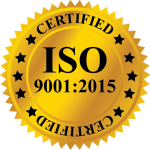What is the MDR (Medical Device Regulation) in Europe? For medical device firms that want to sell their products in the European market, compliance with the European Medical Device Regulation (MDR) is a must. The MDR is a set of rules that controls the production and distribution of medical devices in Europe. To continuously monitor the performance and safety of their goods, medical device manufacturers must build a suite of regulatory systems, processes, and records that are MDR-compliant. Any manufacturer, authorised agent, importer, or distributor of medical equipment in the EU is subject to the legislation.
MDD VS MDR: MDD was a directive, which countries had to implement into their own legislative policies. The MDR, on the other hand, is a regulation that member states must immediately implement without going through a subsequent integration procedure into their domestic law. Conformity Assessments continue to be the primary regulatory obstacle that firms must plan for, much like the previous MDD. The Conformity Assessments will be examined by the Notified Bodies, which are agencies authorised by the member states of the EU, as was being followed under the MDD. Only a few Notified Bodies from MDD are being kept, per the MDR, and the functional importance of the Notified Bodies has undergone a significant revision.
On May 26, 2021, the EU MDR went into effect. The European Union’s medical device makers will be significantly impacted by the new regulation’s emphasis on tighter criteria and market unification. Let’s examine the main modifications made by the previous MDR vs. MDD regulation in more detail.
| Articles: The main differences between the 23 articles of the MDD (Medical Device Directive) and the 123 articles of the MDR (Medical Device Regulation). | |
| 1. Numbering and Structure: The MDD uses Articles, Annexes, and Rules. Articles in MDD are numbered from Article 1 to Article 18. | 1. Numbering and Structure: The MDR also uses Articles, but they are numbered from Article 1 to Article 123. Additionally, the MDR has Annexes and a more complex structure compared to the MDD. |
| 2. Scope and Definitions: Articles 1 and 2 of the MDD define the scope and key definitions. | 2. Scope and Definitions: Articles 1 and 2 of the MDR also define the scope and introduce new and expanded definitions. The MDR has more comprehensive and detailed definitions compared to the MDD |
| 3. Conformity Assessment: Article 9 of the MDD addresses the Conformity Assessment procedures. | 3. Conformity Assessment: Articles 52 to 59 of the MDR cover Conformity Assessment procedures. The MDR introduces more rigorous and detailed requirements for conformity assessment, including enhanced scrutiny and post-market surveillance. |
| 4. Clinical Evaluation and Clinical Investigations: The MDD does not have specific articles exclusively dedicated to clinical evaluation or clinical investigations. These aspects are addressed in Annex X and Annex IX respectively. | 4. Clinical Evaluation and Clinical Investigations: The MDR has specific articles (Article 61 to Article 82) dedicated to clinical evaluation and clinical investigations. It places a stronger emphasis on clinical evidence, post-market clinical follow-up, and the role of qualified experts. |
| 5. Post-Market Surveillance: Post-market surveillance requirements are addressed in Article 10 of the MDD, but they are relatively less detailed compared to the MDR. | 5. Post-Market Surveillance: The MDR significantly expands the requirements for post-market surveillance in Article 83. It emphasizes the importance of active and systematic collection and analysis of post-market data. |
| 6.Unique Device Identification (UDI): The MDD does not have specific articles related to UDI. | 6. Unique Device Identification (UDI): The MDR introduces requirements for the assignment of UDIs in Article 27. This is an important addition for traceability and safety. |
| 7. EUDAMED Database: The MDD does not have provisions for the Eudamed database. | 7. EUDAMED Database: The MDR introduces Article 33 which establishes the European database on medical devices (Eudamed), a central repository for information on medical devices. |
| MDD (Medical Device Directive): Under the MDD, medical devices are classified into one of four classes, ranging from Class I to Class III, based on the potential risks associated with their use. MDR (Medical Device Regulation): MDR introduces a more detailed and nuanced classification system. It maintains the basic structure of four classes, but it further subdivides devices within each class. This is achieved through a series of rules outlined in Annex VIII of the MDR. | |
| 1. Class I: Devices that present the lowest level of risk to patients. They do not need to undergo a conformity assessment by a Notified Body, and manufacturers can self-certify their compliance with essential requirements. | 1. Class I is further divided into three sub-classes based on factors like body contact duration and invasiveness. Class I includes: · Class I (Measuring) · Class I (Non-Sterile, Non-Measuring) · Class I (Sterile) |
| 2. Class IIa: Devices that pose a higher risk than Class I, but not as high as Class IIb or III. They require assessment by a Notified Body, but the level of scrutiny is lower than for higher-risk classes. | 2. Class IIa is subdivided based on factors like body orifice contact and invasive nature. |
| 3. Class IIb: Devices that present a higher level of risk than Class IIa. They require a more rigorous conformity assessment by a Notified Body. | 3. Class IIb is also subdivided based on similar factors as Class IIa. |
| 4. Class III: Devices that present the highest level of risk to patients. They require the most extensive conformity assessment by a Notified Body. | 4. Class III remains a single category, but it includes more detailed rules and requirements for the highest-risk devices. |
| The Quality Management System (QMS) requirements for medical device manufacturers have evolved significantly with the transition from the Medical Device Directive (MDD) to the Medical Device Regulation (MDR). | |
| 1. Standard Reference: The MDD references compliance with the EN ISO 13485:2012 standard or an equivalent national standard as a means to demonstrate conformity with QMS requirements. | 1. Updated Standard: The MDR mandates compliance with the EN ISO 13485:2016 standard, which is an updated version of the standard referenced in the MDD. This version places more emphasis on risk management and emphasizes a process-based approach. |
| 2. Documentation: The MDD outlines general requirements for QMS documentation, including the need for a quality manual, documented procedures, and records. | 2. Additional Requirements: – The MDR introduces several additional requirements for QMS, including specific provisions for economic operators (importers, distributors, etc.), as well as the role and responsibilities of the Authorized Representative. |
| 3. Post-Market Surveillance: The MDD requires manufacturers to establish and maintain procedures for post-market surveillance, including the need to monitor and report adverse events. | 3. Unique Device Identification (UDI): The MDR introduces requirements for the implementation of a Unique Device Identification (UDI) system, which involves assigning a unique identifier to each medical device to enhance traceability. |
| 4. Post-Market Surveillance Enhancements: The MDR significantly expands post-market surveillance requirements, including the need for a Post-Market Surveillance (PMS) Plan and a Periodic Safety Update Report (PSUR). | |
| 5. Vigilance Reporting: – The MDR introduces new requirements for manufacturers to report serious incidents and field safety corrective actions directly to the competent authorities, and in certain cases, to the public. | |
| 6. Clinical Evaluation and Performance Evaluation: The MDR places greater emphasis on clinical evidence and requires manufacturers to establish and maintain procedures for clinical evaluation and performance evaluation. | |
| 7. Eudamed Database: – The MDR establishes the European database on medical devices (Eudamed), which will be an integral part of QMS for various aspects, including registration and clinical investigation. | |
| 8. Requirements for Custom-Made Devices: The MDR introduces specific requirements for manufacturers of custom-made devices, including the need for a QMS to ensure compliance with the regulation. | |
| Notified bodies: Notified Bodies play a critical role in the conformity assessment process for medical devices in the European Union. They are organizations designated by EU member states to assess whether manufacturers’ products meet the necessary regulatory requirements. The transition from the Medical Device Directive (MDD) to the Medical Device Regulation (MDR) has brought about several changes in how Notified Bodies operate. | |
| 1. Number of Notified Bodies: – Under the MDD, there were a substantial number of Notified Bodies, each designated by individual member states. The total number varied from country to country. | 1. New Designation Process: The MDR introduced a more rigorous and centralized process for the designation of Notified Bodies. This process involves a comprehensive assessment by the competent authorities and is based on stringent criteria laid out in the regulation. |
| 2. Scope of Designation: Notified Bodies could be designated for specific types or categories of medical devices (e.g., Class I, Class IIa, etc.). | 2. Expanded Scope: – Notified Bodies under the MDR have a broader scope and are designated for the entire European market. They are required to have expertise in a wider range of medical devices and technologies. |
| 3. Less Stringent Requirements: – The MDD did not have as strict and comprehensive requirements for Notified Bodies compared to the MDR. | 3. Enhanced Expertise and Resources: Notified Bodies under the MDR are expected to have a more significant level of expertise, including in-depth knowledge of clinical evaluation and performance evaluation. |
| 4. Competency Assessment: Notified Bodies were subject to assessments by competent authorities, but the criteria and procedures were less standardized and detailed compared to the MDR. | 4. More Stringent Requirements: – The MDR establishes more detailed and strict requirements for Notified Bodies, including specific competence and expertise requirements, organizational structure, and processes. |
| 5. Oversight and Monitoring: Notified Bodies are subject to increased oversight and monitoring by competent authorities. They are also subject to unannounced audits and assessments. | |
| 6. Collaboration with Competent Authorities: – Notified Bodies are required to collaborate closely with competent authorities and share information related to conformity assessment activities. | |
| 7. Joint Assessments: The MDR allows for joint assessments of Notified Bodies by multiple member states to ensure consistent and high-quality assessments. | |
| Clinical evaluation is a critical component in demonstrating the safety and performance of medical devices. The transition from the Medical Device Directive (MDD) to the Medical Device Regulation (MDR) has led to several significant changes in the clinical evaluation requirements. | |
| 1. Emphasis on Equivalence: – The MDD allowed manufacturers to use data from equivalent devices to support their clinical evaluations, especially for well-established technologies. This approach was widely used to justify the safety and performance of a device. | 1. Emphasis on Clinical Evidence: – The MDR places a much greater emphasis on clinical evidence, and clinical evaluation is now required for all medical devices. Manufacturers must establish and maintain procedures for clinical evaluation as part of their Quality Management System. |
| 2. Limited Clinical Data Requirements: The MDD did not explicitly require clinical data for all devices. Instead, it allowed for the use of existing clinical data or literature reviews, especially for low-risk devices. | 2. Clinical Evaluation Report (CER): The MDR introduces the requirement for a Clinical Evaluation Report (CER) which is a structured document summarizing the clinical evaluation process, findings, and conclusions. |
| 3. MDD Annexes: – Annexes in the MDD provided guidance on specific aspects of clinical evaluation, such as clinical data requirements, clinical investigations, and post-market surveillance. | 3. Clinical Evaluation Plan (CEP): – Manufacturers are required to develop a Clinical Evaluation Plan (CEP) outlining the strategy for collecting and assessing clinical data. This plan should be a dynamic document that is updated throughout the device’s lifecycle. |
| 4. Role of Notified Bodies: Notified Bodies under the MDD played a role in reviewing the clinical evaluation documentation as part of the conformity assessment process. | 4. Greater Scrutiny of Equivalence: The MDR places stricter requirements on the use of equivalent devices. Manufacturers must provide robust scientific justification for the use of such data and must demonstrate equivalence in clinical performance. |
| 5. More Detailed Clinical Evaluation Requirements: – The MDR provides detailed requirements for conducting clinical evaluations, including the need for a systematic literature review, the identification of relevant clinical data, and the assessment of clinical performance and safety. | |
| 6. Role of Expert Panels and Notified Bodies: In certain cases, especially for high-risk devices, manufacturers may be required to consult expert panels to obtain advice on clinical evaluation. Notified Bodies also play a more active role in reviewing and assessing clinical evaluation documentation. | |
| 7. Post-Market Clinical Follow-Up (PMCF): – The MDR introduces the concept of Post-Market Clinical Follow-Up (PMCF), which involves the systematic collection and analysis of clinical data after the device has been placed on the market. | |
| Annexes in the context of medical device regulations refer to specific sections or attachments that provide additional details, guidance, or requirements related to the main body of the regulation. Both the Medical Device Directive (MDD) and the Medical Device Regulation (MDR) have annexes, but there are significant differences between the two in terms of content and scope. | |
| 1. Annex I – Essential Requirements: – Annex I of the MDD contains a list of essential requirements that medical devices must meet in order to ensure their safety and performance. Manufacturers are required to demonstrate conformity with these requirements. | 1. Annex I – Essential Requirements: Similar to the MDD, Annex I of the MDR contains a list of essential requirements that medical devices must meet for safety and performance. |
| 2. Annex II Technical documentation: Annex II outlines the contents and structure of the technical documentation that manufacturers must compile to demonstrate compliance with the essential requirements. | 2. Annex II – Technical Documentation: Like the MDD, this annex outlines the contents and structure of the technical documentation that manufacturers must compile to demonstrate compliance with the essential requirements. |
| 3. Annex III – EC Declaration of Conformity: This annex provides the format for the EC Declaration of Conformity, which is a declaration made by the manufacturer confirming that their device complies with the requirements of the MDD. | 3. Annex III – EC Declaration of Conformity: Provides the format for the EC Declaration of Conformity, similar to the MDD. |
| 4. Annex IV – EC Verification: Annex IV provides details on the EC type-examination process, which is a conformity assessment procedure for certain classes of devices. | 4. Annex IV – EC Verification: Annex IV of the MDR provides specific details on the EC type-examination process. |
| 5. Annex V – Production Quality Assurance: This annex outlines the requirements for the Production Quality Assurance (PQA) system that manufacturers can use for certain types of devices. | 5. Annex V – Conformity Assessment Procedures: This annex provides an overview of the various conformity assessment procedures available under the MDR, including details on their application and execution. |
| 6. Annex VI – Full Quality Assurance: Annex VI specifies the requirements for Full Quality Assurance (FQA) systems, which are applicable to higher-risk devices. | 6. Annex VI – Criteria for Designation of Notified Bodies: Annex VI outlines the criteria that competent authorities must consider when designating and monitoring Notified Bodies. |
| 7. Annex VII – EC Declaration of Conformity for Conformity to Type: This annex provides the format for the EC Declaration of Conformity for conformity to type based on quality assurance of the production process. | 7. Annex VII to XXXV – Conformity Assessment Procedures: These annexes provide detailed requirements and procedures for specific types of devices and conformity assessment routes. |
Conclusion: The transition from the Medical Device Directive (MDD) to the Medical Device Regulation (MDR) signifies a major shift in the regulatory landscape for medical device manufacturers in Europe. The MDR brings about a more rigorous and comprehensive framework aimed at enhancing patient safety and ensuring the efficacy of medical devices in the market. Key changes include an expanded scope of definitions, more stringent conformity assessments, a heightened focus on clinical evidence, and the introduction of the Unique Device Identification (UDI) system. Notified Bodies, which play a crucial role in the conformity assessment process, are subject to more rigorous scrutiny and standardized criteria.
How ND Global, can help: Navigating the complexities of MDR compliance requires specialized knowledge and expertise. ND Global, a leading medical device consulting firm, is poised to assist manufacturers in this crucial transition. Our team of seasoned regulatory experts provides tailored solutions to ensure seamless compliance with MDR requirements.
- Regulatory Strategy Development
- Conformity Assessment Support
- Clinical Evaluation Expertise
- Notified Body Liaison
- UDI Implementation Guidance
- Quality Management System (QMS) Review and Enhancement
- Eudamed Database Integration










